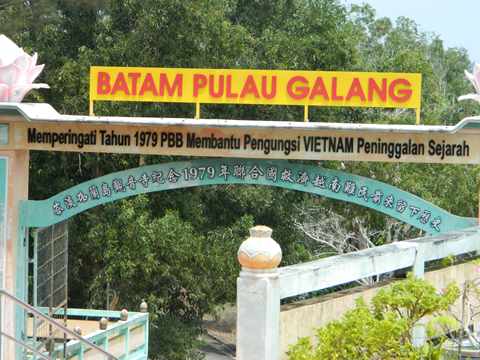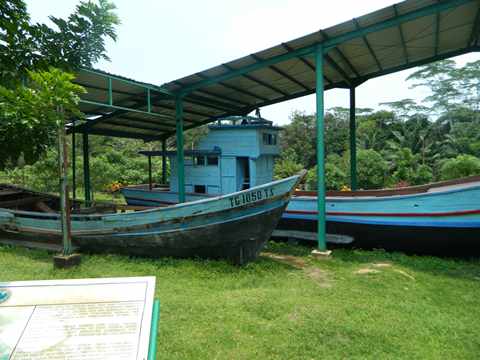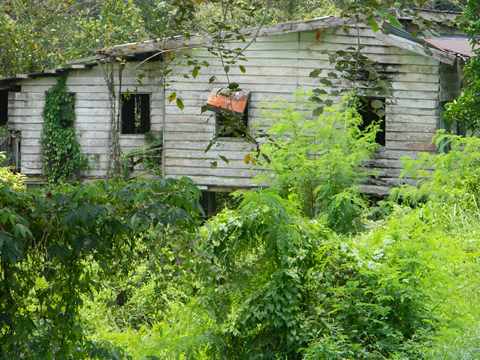Galang Refugee Camp

Glenoverland
Tue 27 Sep 2011 06:27
|
0:45.00 N 104:23.33 E
Galang Refugee Camp, Pulau Galang, Riau, Indonesia; Sunday 25 September
2011
We hired a tour guide, Supri, today and he took us all the way down the
chain of islands linked with bridges, from Batam to Setoko to Rempang to Galang
to Galang Baru.
On Pulau Galang there is a place marked Kampong Vietnam, so we expected a
hustling, bustling “Little Vietnam” village with lots of handicrafts on
sale. Not so.
Supri was a lovely chap but didn’t have great English, so he wasnt able to
tell us much about the places we were visiting. All he could tell us about
Kampong Vietnam was that we would see a buddhist temple, and spider monkeys,
which we certainly did. The spider monkeys were quite an attraction, some
mums with babies clinging to them, some gambolling infants, all keen to pick up
peanuts that people were throwing to them.
The rest was a mystery. It was a beautiful site, with a tarmac road
winding through what could have been a botanical garden with signposts, pointing
to temples, houses, hospital, boats, graveyard... This was not a thriving
community, but the abandoned site of the Vietnamese boat people’s
settlement that opened in 1978 and closed in 1998. There were 2
broken down boats, a temple, a catholic church, hospital, tiny prison, and the
remains of houses. There was also an information centre, full of photos of
smiling Vietnamese, some artefacts, and some explanation in Bahasa, and a couple
of very smiley attendants. The whole site was neatly tended with cut grass
verges. It all felt warm and glowy, till we got home and googled it.
This was the story we read from the internet. Galang camp was home to
thousands of Vietnamese who fled from the communists and survived the sea
crossing, following the fall of Saigon. As we know, many were drowned or
murdered by pirates. One boat full of corpses was washed up on Galang and
the unidentifiable bodies were buried there in a mass grave. The Galang
site was originally administered by the Indonesian government but was quickly
taken over by UNHCR. As more refugees arrived, numbers swelled to 4 times
the intended limit, and conditions deteriorated rapidly. The UNHCR
officials had to decide who qualified for asylum and who didnt; 80% were
rejected. The UN people were present in the daytime but not overnight, and this
was when widespread abuse and rape of the refugees by the Indonesian guards
occurred. Because of the abuse and the threat of being sent back to
Vietnam, there were mass suicides including many cases of hanging and self
immolation, and the 500 odd marked graves are predominantly occupied by
suicides. The last Vietnamese were finally shipped out in 1998.
In spite of the terrible time many of the refugees had there, the overseas
Vietnamese community erected a monument at the Galang site, and another one in a
camp in Malaysia, to show gratitude to the countries who gave them refuge.
These monuments were recently removed, however, at the insistence of the
Vietnamese government, amid protests of “trying to erase history”.
What is really shocking is that all this was building up when we lived in
Sinagpore (1976-79) just a few miles away. As far as I remember, we didnt
know anything about it.
|


